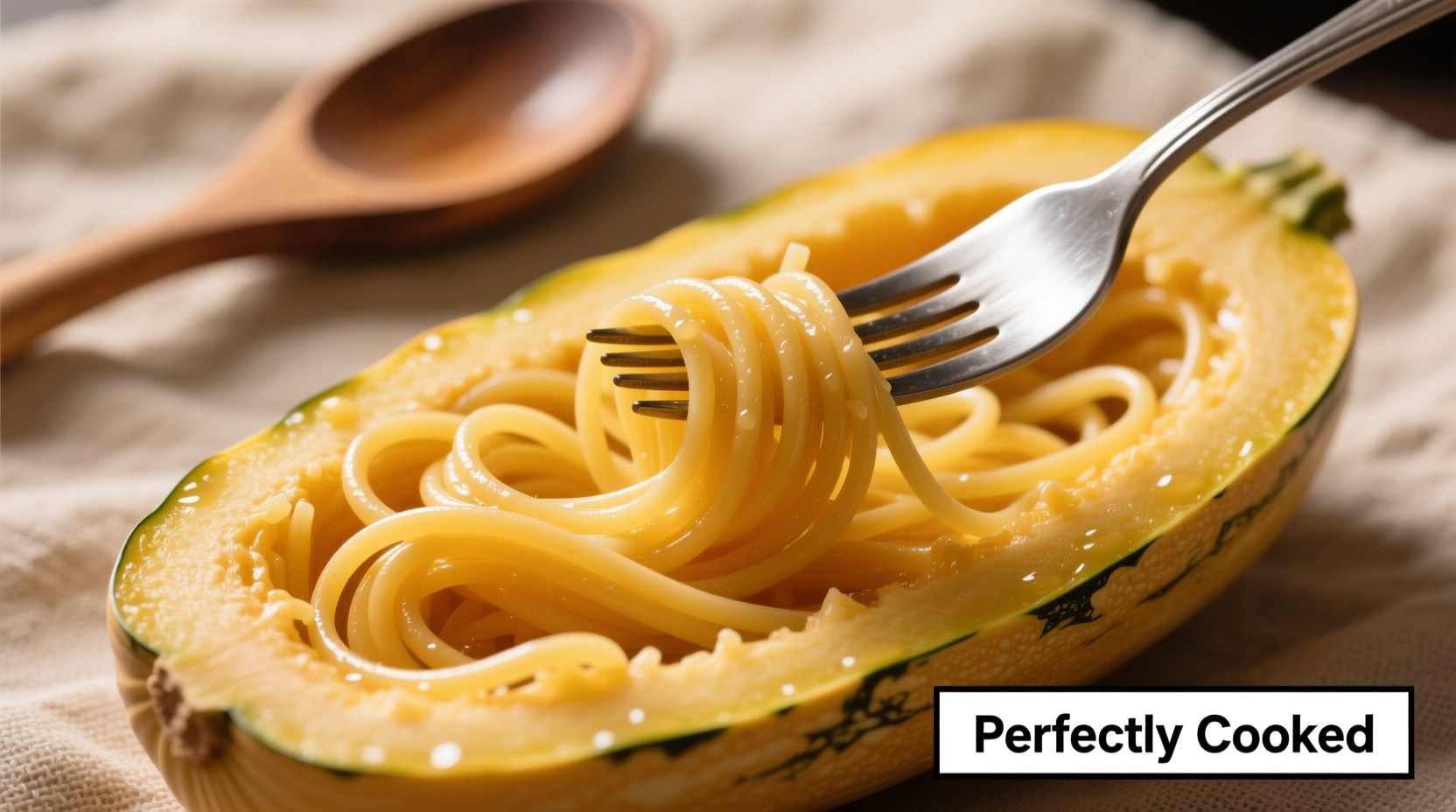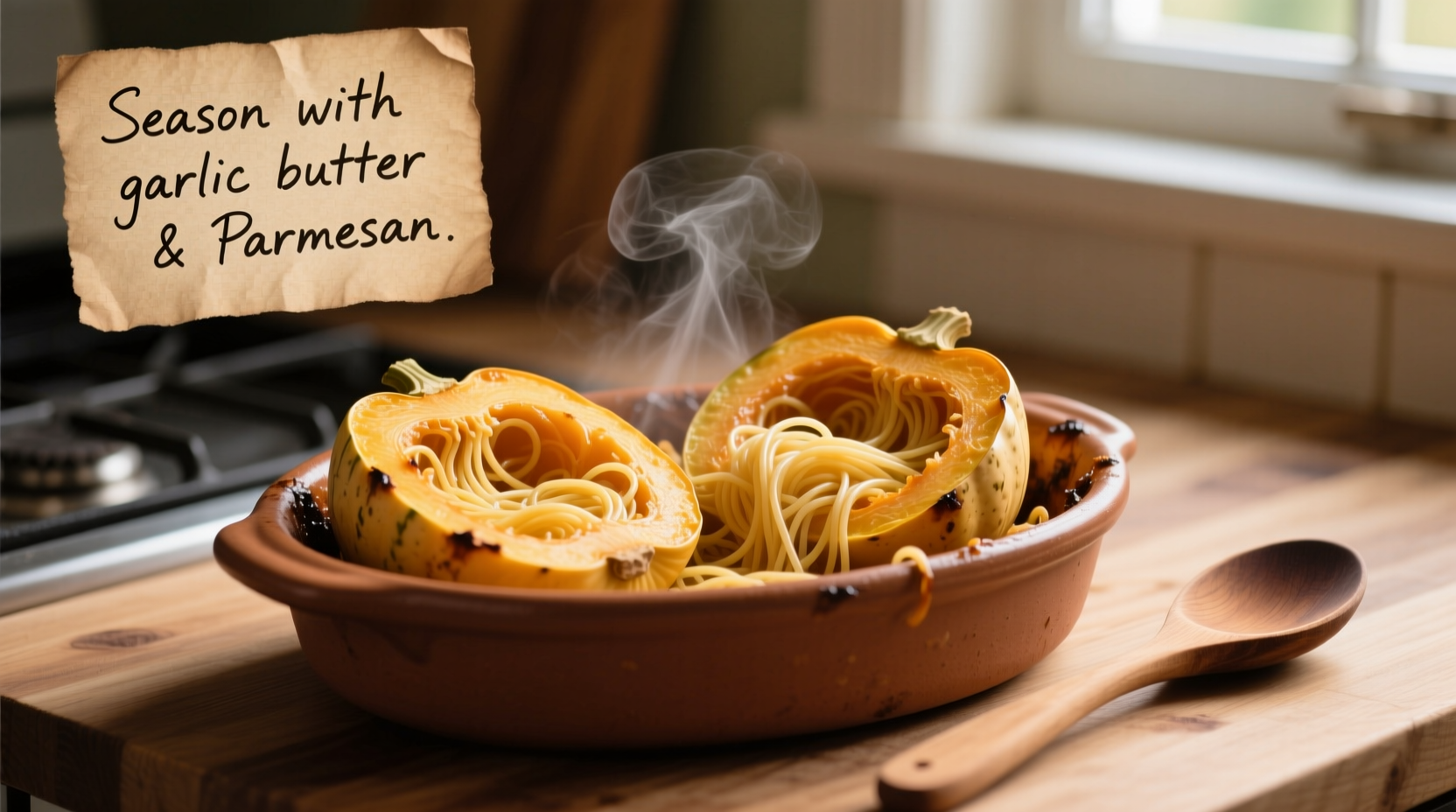Why Spaghetti Squash Deserves a Spot in Your Kitchen
Spaghetti squash offers a nutritious, low-calorie alternative to traditional pasta with just 42 calories per cup compared to 221 calories in cooked spaghetti (USDA FoodData Central). This winter squash variety produces tender, strand-like flesh when cooked that perfectly mimics pasta texture while providing essential nutrients like vitamin C, vitamin B6, and dietary fiber. Professional chefs value its neutral flavor profile that readily absorbs sauces and seasonings, making it incredibly versatile for both simple weeknight meals and elegant dinner party dishes.
Selecting and Preparing Your Squash
Choosing the right spaghetti squash sets the foundation for perfect results. Look for firm, heavy-for-its-size squash with a uniform golden-yellow color and no soft spots. The squash should feel solid with a dry, intact stem. Avoid any with cracks or blemishes that could indicate internal decay.
Safe Cutting Techniques (Critical Step)
Cutting spaghetti squash safely requires proper technique due to its tough exterior. Professional chefs recommend:
- Refrigerate the squash for 1-2 hours before cutting to firm the flesh
- Use a sharp 8-10 inch chef's knife with a sturdy handle
- Place a damp towel under your cutting board for stability
- Carefully pierce the squash at the stem end, then rock the knife through while applying steady pressure
- Never force the knife—use controlled, incremental cuts
For those uncomfortable with knife work, microwaving the whole squash for 3-5 minutes softens the skin enough for safer cutting. Always cut lengthwise for maximum strand formation.

Four Reliable Cooking Methods Compared
Each cooking method delivers distinct results depending on your time constraints and equipment. Understanding these differences helps you choose the perfect approach for your needs.
| Cooking Method | Time Required | Texture Result | Best For |
|---|---|---|---|
| Oven Roasting | 40-50 minutes | Firm, well-defined strands | Meal prep, best flavor development |
| Microwave | 8-12 minutes | Softer strands, slightly watery | Quick weeknight meals |
| Boiling | 15-20 minutes | Tender but can become mushy | Traditional preparation |
| Air Frying | 25-35 minutes | Firm with slight caramelization | Crisp texture lovers |
Oven Roasting: The Flavor-Enhancing Method
Preheat your oven to 400°F (200°C). After cutting the squash in half lengthwise and removing seeds, brush the cut sides with 1 tablespoon of olive oil and season with salt and pepper. Place cut-side down on a parchment-lined baking sheet. Roast for 35-45 minutes until a fork easily pierces the skin and strands separate cleanly. This method concentrates flavors through caramelization while maintaining ideal strand structure. For restaurant-quality results, professional chefs add a pinch of nutmeg to enhance natural sweetness.
Microwave: The 10-Minute Solution
Place halved, seeded squash cut-side down in a microwave-safe dish with 2 tablespoons of water. Microwave on high for 8-12 minutes (depending on squash size and microwave wattage) until tender. This method preserves nutrients better than boiling while significantly reducing preparation time. To prevent sogginess, professional chefs recommend transferring the cooked squash to a colander immediately after cooking to drain excess moisture.
Boiling: Traditional Preparation
Cut the squash into 1-inch chunks after removing seeds. Place in a large pot of salted boiling water and cook for 15-20 minutes until tender. Drain thoroughly in a colander, then use a fork to separate strands. While this method works, it often results in watery strands that don't hold sauce well. For improved results, professional chefs suggest shocking the cooked squash in ice water to stop the cooking process and preserve texture.
Air Frying: The Crisp Texture Option
Cut squash into 1-inch thick half-moons after removing seeds. Toss with 1 tablespoon olive oil, salt, and pepper. Arrange in a single layer in the air fryer basket (avoiding overcrowding). Cook at 375°F (190°C) for 25-35 minutes, flipping halfway through, until tender and slightly caramelized at the edges. This method creates beautifully defined strands with a delightful textural contrast between tender interior and slightly crisp exterior.
Achieving Perfect Texture Every Time
The most common spaghetti squash cooking mistake is ending up with mushy strands. Professional chefs use these techniques to ensure perfect texture:
- Salt before cooking: Sprinkle cut surfaces with salt and let sit for 15 minutes to draw out excess moisture
- Don't overcook: Test for doneness starting at minimum time—strands should separate easily but still offer slight resistance
- Drain thoroughly: After cooking, place strands in a clean kitchen towel and gently squeeze out excess water
- Season after cooking: Add salt after separating strands to prevent drawing out more moisture
For authentic Italian-style preparation, professional chefs recommend treating spaghetti squash like fresh pasta—cook until al dente, then finish in your sauce for 1-2 minutes to allow flavors to meld.
Serving Suggestions That Impress
While marinara sauce is the classic pairing, spaghetti squash serves as a versatile canvas for numerous flavor profiles:
- Classic Italian: Toss with homemade marinara, fresh basil, and grated Parmesan
- Pesto Power: Combine with basil pesto, toasted pine nuts, and cherry tomatoes
- Asian Fusion: Mix with sesame oil, soy sauce, ginger, and sautéed mushrooms
- Mediterranean: Top with olives, feta cheese, roasted red peppers, and lemon zest
For meal prep success, cooked spaghetti squash stores well in airtight containers in the refrigerator for 4-5 days or frozen for up to 3 months. When reheating, professional chefs suggest adding a splash of water and covering to prevent drying out.











 浙公网安备
33010002000092号
浙公网安备
33010002000092号 浙B2-20120091-4
浙B2-20120091-4